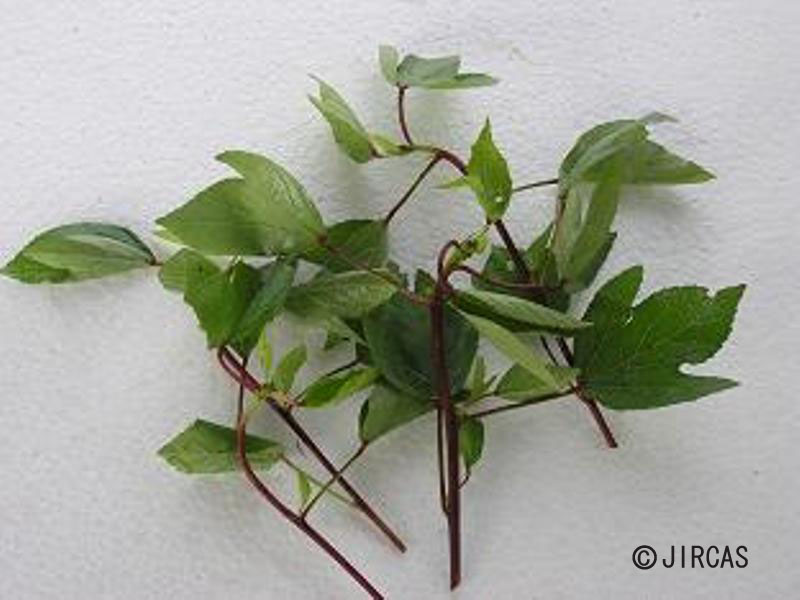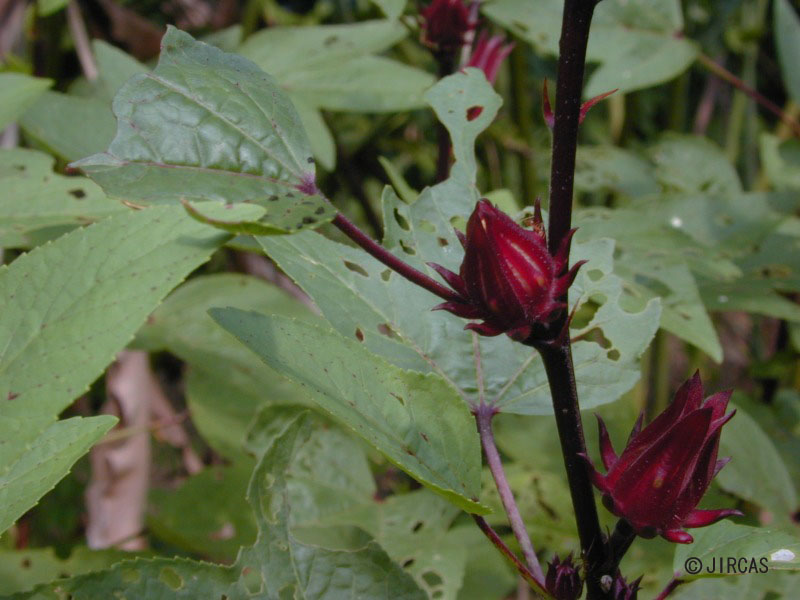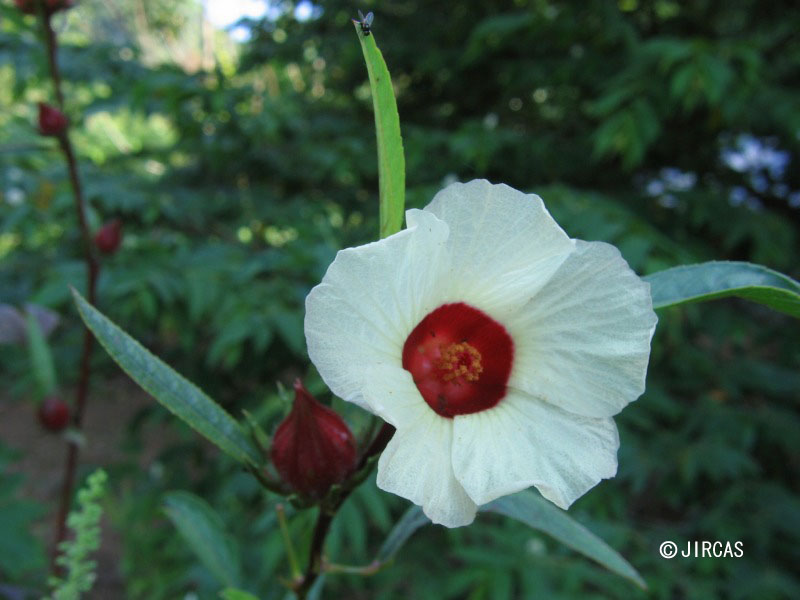Hibiscus sabdariffa L. (Malvaceae)
- Scientific name
- Hibiscus sabdariffa L.
- Family name
- Malvaceae
- Common name
- Roselle, Jamaican sorrel (English) ; rozensou (Japanese)
- Local name
- Krachiap daeng
Small, annual shrub, 1–2 m tall. Stem purplish red. Leaves alternate, simple, variable in shape, entire or deeply lobate, 3–5, dentate, 8–12 cm long. Inflorescence a loose cluster, axillary. Flowers actinomorphic, bisexual, yellow, with dark throat inside. Epicalyx segments 7–10, without appendage, reddish, linear, usually fleshy; calyx 5-lobed, 1–2 cm long, with nectary on costae outside, usually large and fleshy after anthesis, accrescent to 5 cm, closely enveloping the capsule, dark purple or red; corolla with 5 petals, not widely opened, pale yellow or pale pink, with dark purple basal spot; staminal column erect, 1.5–2 cm long, bearing anthers almost from the base; style arms 5, short, each ending in a discoid stigma. Fruit a dehiscent capsule, ovoid, acute, yellow, hairy, c. 2.5 cm long, enclosed within enlarged calyx. Seeds reniform.
Common crop in dry regions of central Thailand. Occasionally grown in backyard gardens for its sour young leaves and red fruiting calyx. Propagated by direct seed sowing at a spacing of 20 x 20 cm.
Young leaves are blanched and eaten with nam phrik (dipping sauces) or as a substitute for spinach. Leaves are cooked in tom yam (hot and sour soup). Fleshy calyx is used to make jams, jellies, juices, wines, and food colouring. Calyx is also used as a purple or blue dye. Pickled flowers (dok kra-jiab chair-im) are eaten in central Thailand. Leaves contain 85 g water, 3.3 g protein, 0.3 g fat, 9 g carbohydrates, 1.6 g fibre, 213 mg calcium, 4.8 mg iron, 93 mg phosphorus, 4.1 g beta-carotene, 0.17 mg vitamin B1, 0.45 mg vitamin B2, 1.2 mg niacin, and 54 mg vitamin C per 100-g serving.
Young leaves are blanched and eaten with nam phrik (dipping sauces) or as a substitute for spinach. Leaves are cooked in tom yam (hot and sour soup). Fleshy calyx is used to make jams, jellies, juices, wines, and food colouring. Calyx is also used as a purple or blue dye. Pickled flowers (dok kra-jiab chair-im) are eaten in central Thailand. Leaves contain 85 g water, 3.3 g protein, 0.3 g fat, 9 g carbohydrates, 1.6 g fibre, 213 mg calcium, 4.8 mg iron, 93 mg phosphorus, 4.1 g beta-carotene, 0.17 mg vitamin B1, 0.45 mg vitamin B2, 1.2 mg niacin, and 54 mg vitamin C per 100-g serving.






